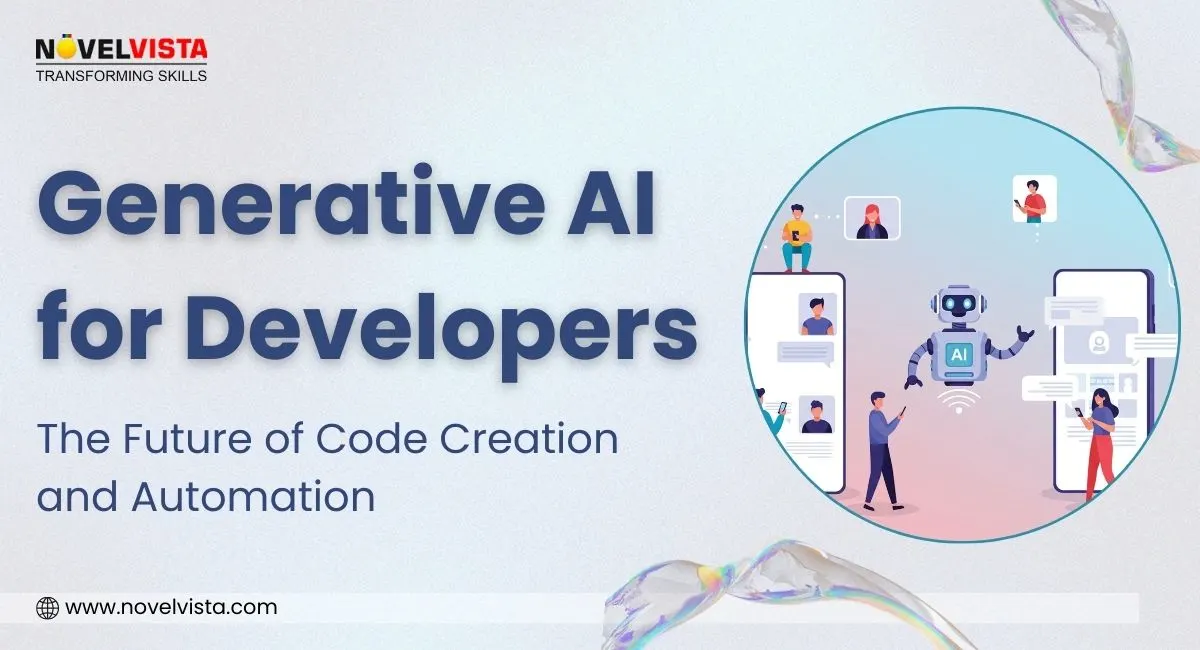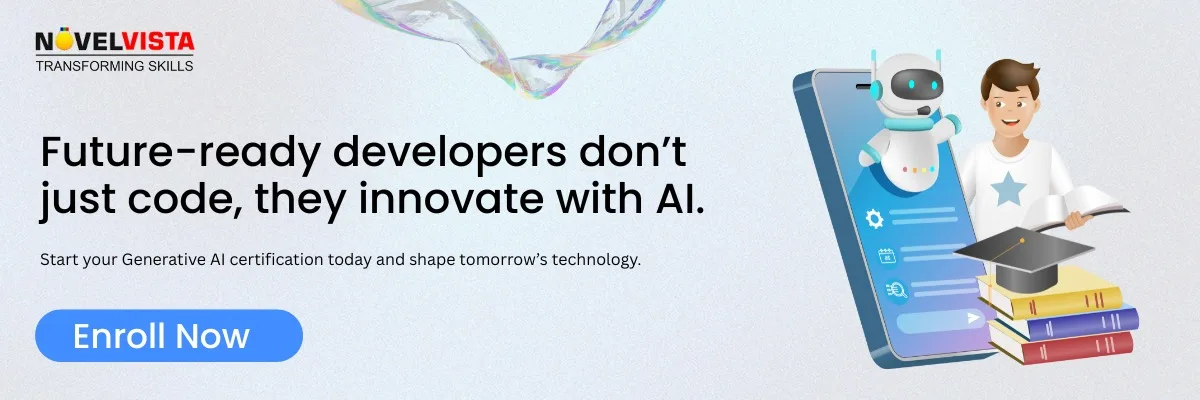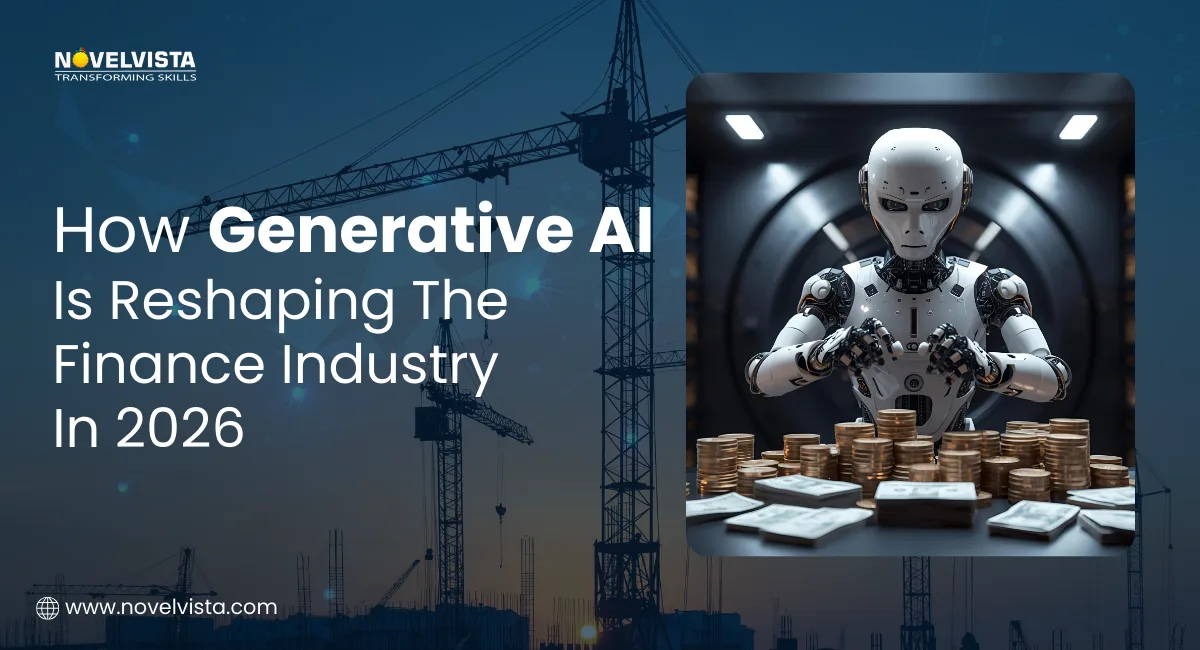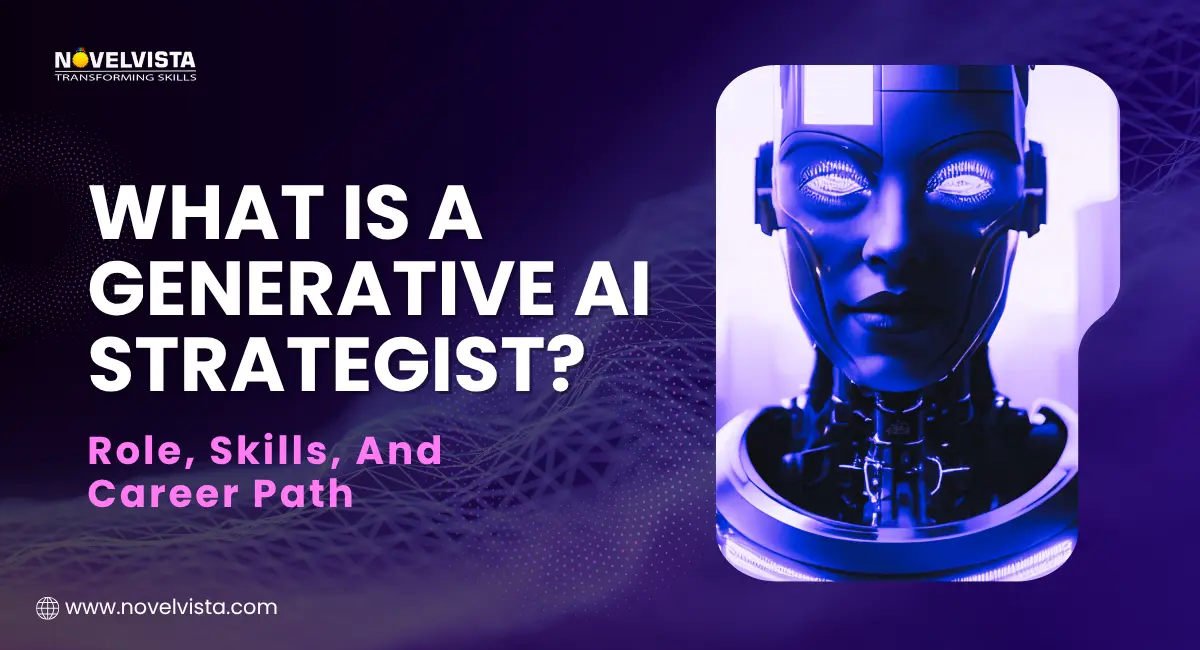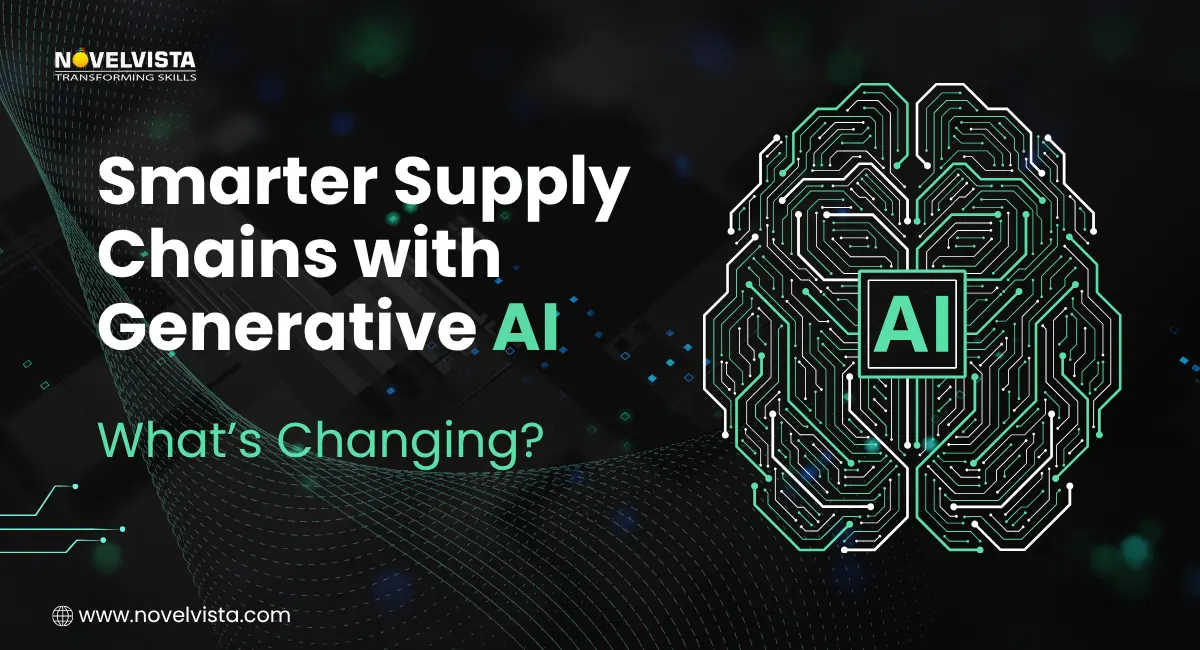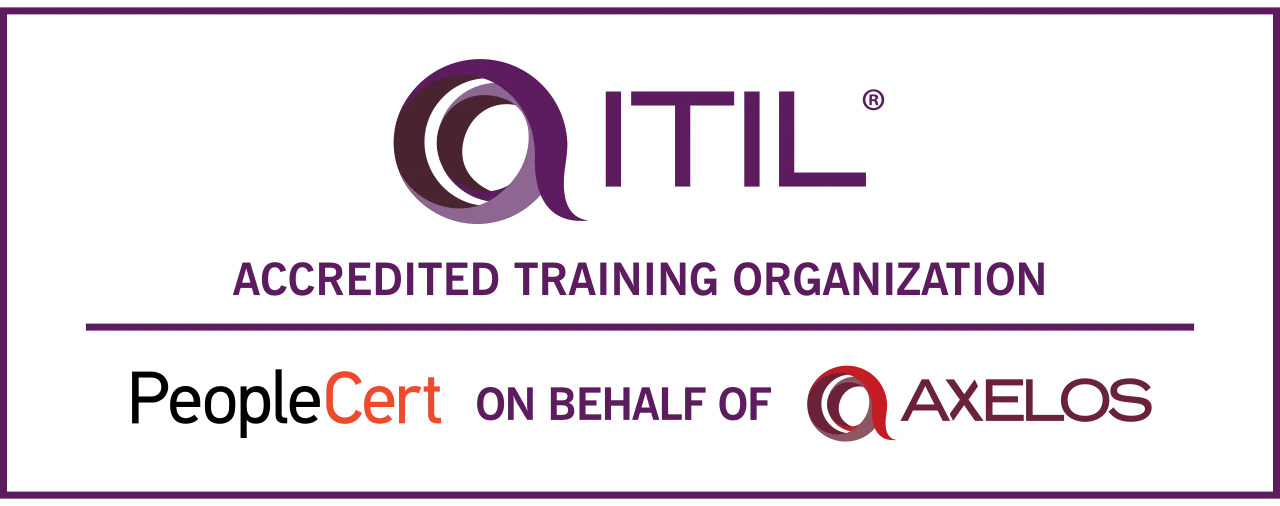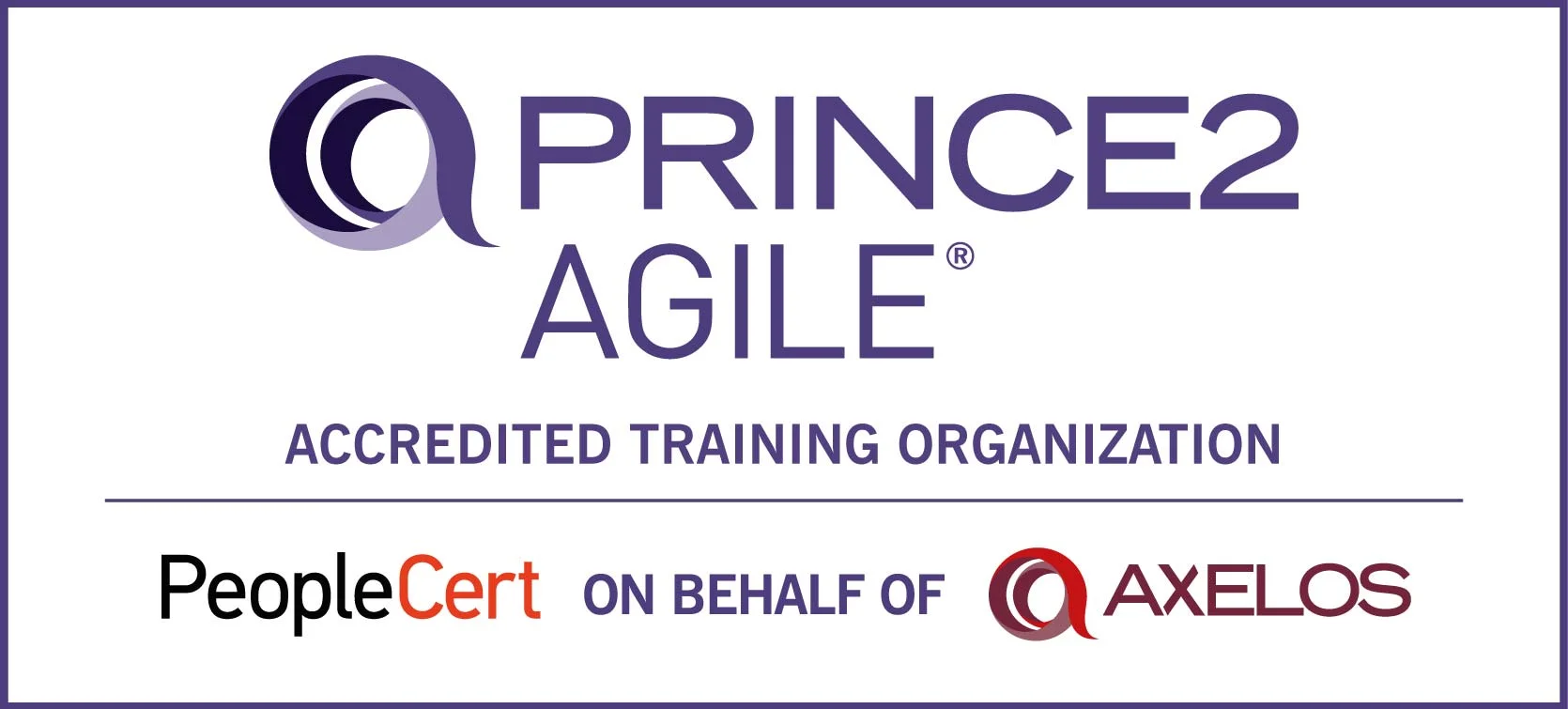- Generative AI in Software Development: What It Really Means
- Boosting Developer Productivity with Generative AI
- How Generative AI for Coding Actually Works
- Real-World Applications of Generative AI for Developers
- Key Benefits of Generative AI for Developers
- Challenges and Limitations of AI in Software Development
- Future Trends in Generative AI Developer
- Understanding The Future of Generative AI Developer
- Conclusion: Embracing AI Without Losing Human Creativity
- Next Step: Boost Your Career with NovelVista
Generative AI for developers is quickly becoming a game-changer in software engineering. Simply put, it’s AI that can understand code, write new code, and even suggest solutions, acting like a smart coding partner. Developers can now automate repetitive tasks, accelerate development cycles, and focus on higher-level creative work. In short, it’s not replacing programmers, it’s supercharging them.
With the rising adoption of AI in coding, studies show that over 40% of software teams are now using AI-powered tools to boost productivity. This makes understanding generative AI software development more than a trend; it’s a necessity for anyone who wants to stay relevant in tech.
Generative AI in Software Development: What It Really Means
When we talk about generative AI for developers, we mean AI systems trained on massive codebases to generate new code or improve existing code intelligently. Unlike traditional automation, which follows pre-defined rules or scripts, generative AI software can analyze patterns, predict the next line of code, and even write complex functions based on natural language prompts.
Large Language Models (LLMs), like GPT-based models, are at the heart of this. They understand programming syntax, logic, and frameworks, allowing them to generate code that is not only syntactically correct but also functional. For developers, this opens doors to generative AI software development, where AI can act like an expert assistant or co-developer.
Examples include tools like GitHub Copilot, OpenAI Codex, and Vertex AI, which can translate natural language into working code or suggest optimizations for existing code.Boosting Developer Productivity with Generative AI
The promise of generative AI for developers lies in the productivity gains it offers. Here’s how:
- Faster development cycles: AI can generate boilerplate code or entire modules in minutes, reducing manual coding.
- Automating repetitive tasks: Routine tasks like creating unit tests, API calls, or data transformations can be automated.
- Focus on creative work: Developers can spend more time on architecture, design, and problem-solving rather than repetitive coding chores.
Examples in action:
- Code generation: AI writes functions or classes based on specifications.
- Code completion: Suggestions in real-time while coding.
- Automated testing: AI can create test cases and even suggest improvements.
How Generative AI for Coding Actually Works
So, how does it really function?
- Natural language to code conversion: You type a request in plain English, and AI converts it into functional code. For example, “Create a function to sort a list of users by age” can instantly generate working code.
- AI pair programming assistants: Tools like GitHub Copilot act as virtual pair programmers, suggesting lines of code, fixing bugs, or even explaining code logic.
- Training on massive codebases: These Generative AI models are trained on millions of code snippets across languages, frameworks, and architectures, giving them the knowledge to handle diverse programming tasks.
- Integration into IDEs and pipelines: AI is embedded in development environments, so suggestions and automation happen in real-time as developers work.
Real-World Applications of Generative AI for Developers
Generative AI software development isn’t just theoretical; it’s already transforming workflows:
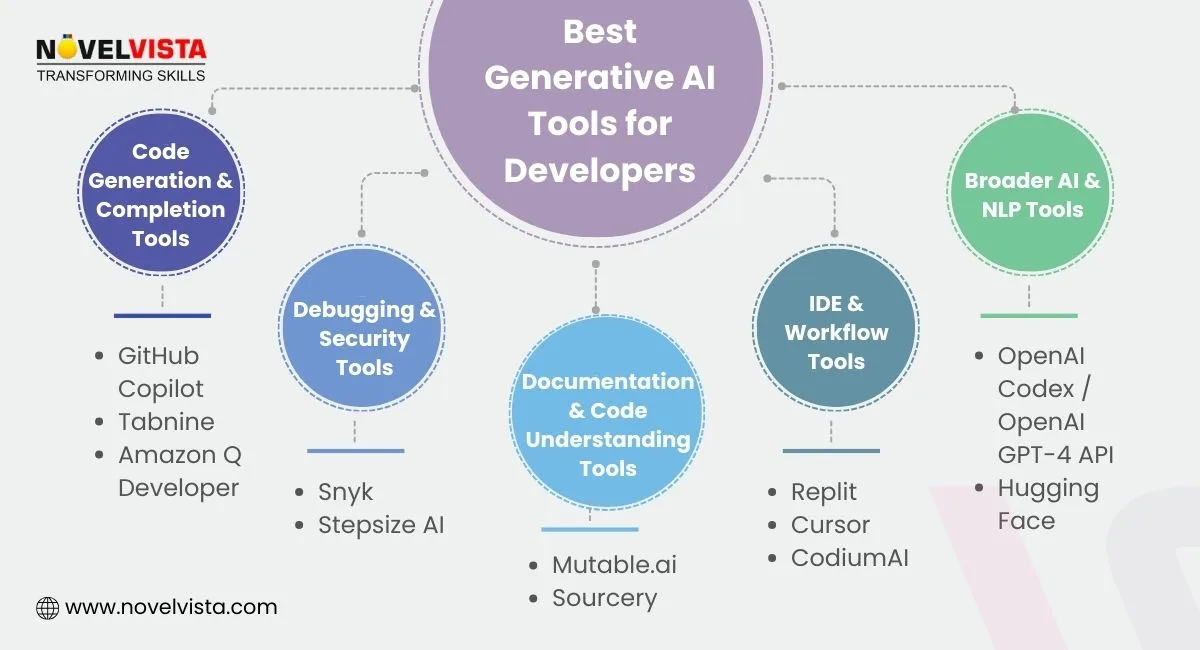
- Code Generation and Automation: AI can write entire functions or scripts, reducing manual coding.
- Code Completion and Suggestions: Predictive prompts save time and reduce syntax errors.
- Automated Testing: Generating test cases automatically ensures better code quality.
- Enhanced Application Development: Experiment faster with new features, UIs, and UX designs.
- Learning and Upskilling: Developers can explore new languages or frameworks with AI guidance.
Key Benefits of Generative AI for Developers
The benefits of generative AI for developers go beyond speed:
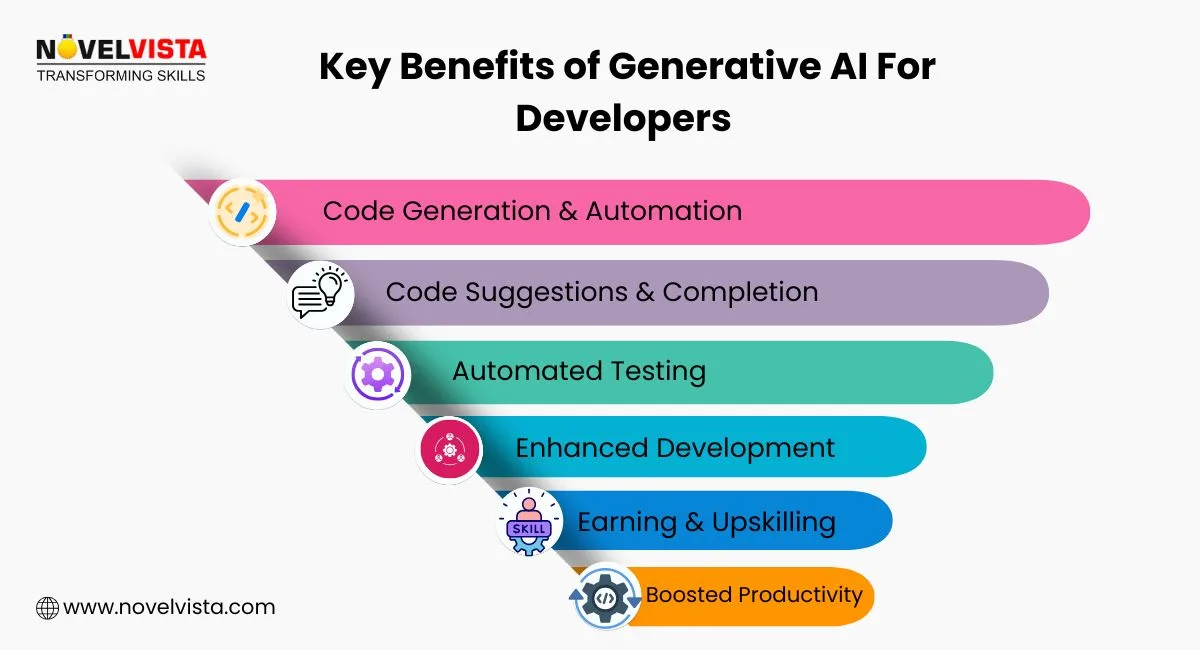
- Code Generation & Automation: AI models generate code snippets, functions, or full programs from descriptions, speeding up development and reducing repetitive work.
- Code Suggestions & Completion: Tools like GitHub Copilot offer real-time suggestions, helping developers write faster with fewer mistakes.
- Automated Testing: AI generates test cases and automates testing, ensuring code quality while minimizing manual effort.
- Enhanced Development: Developers can explore new features, test designs, and create innovative, personalized user experiences with AI assistance.
- Learning & Upskilling: Generative AI helps developers learn new languages, coding styles, and AI concepts, expanding their skillset.
- Boosted Productivity: By automating tasks and providing intelligent assistance, generative AI increases productivity, letting developers focus on creative work.
Challenges and Limitations of AI in Software Development
While generative AI for developers is powerful, it’s not perfect. Developers should be aware of the challenges:
- Accuracy concerns: AI-generated code may sometimes contain errors or not follow best practices. It’s crucial to review outputs carefully.
- Potential biases: AI models are trained on existing code, so bad habits, insecure coding patterns, or outdated practices can be suggested.
- Over-reliance on AI: Leaning too heavily on AI may create skill gaps for developers who stop honing their problem-solving or coding skills.
- Responsible AI Development: Ethical and transparent AI use is vital. Developers must understand how AI makes decisions and ensure their applications comply with standards and security norms.
Despite these generative AI challenges, with proper oversight, generative AI developer tools can be incredibly reliable and enhance the overall development process.
Future Trends in Generative AI Developer
The generative AI ecosystem is evolving fast, and developers need to stay ahead. Some key trends include:
- Wider adoption in enterprises: More companies are integrating AI coding assistants into their software development pipelines.
- Autonomous application development: AI may eventually handle end-to-end app creation, from coding to testing and deployment.
- Integration with cloud-native platforms: AI tools will increasingly combine with DevOps, CI/CD, and containerized environments to automate workflows.
- Smarter AI assistants: Future tools will offer contextual understanding, debugging assistance, and suggestions based on user preferences.
Generative AI Developers Starter Kit
Understanding The Future of Generative AI Developer
To make the most of generative AI software development, developers should focus on:
- Upskilling in AI and machine learning: Understanding the principles behind AI helps developers interact with it more effectively.
- Validating AI outputs: Always review generated code and test thoroughly to maintain quality.
- Keeping up with evolving frameworks and tools: AI is changing rapidly, so staying updated is essential.
- Ethical AI awareness: Learn to use AI responsibly, avoiding over-reliance and ensuring secure, unbiased code.
By following these practices, developers can leverage generative AI for developers to not just automate, but also innovate.
Conclusion: Embracing AI Without Losing Human Creativity
Generative AI for developers is a powerful partner, not a replacement. It handles repetitive tasks, suggests smarter solutions, and allows developers to focus on creativity and innovation. By blending human intelligence with AI’s capabilities, software development becomes faster, more accurate, and more innovative.
The key takeaway? Embrace AI tools, but keep the human touch. Developers who balance automation with creative problem-solving will shape the next era of software development.
Next Step: Boost Your Career with NovelVista
Explore AI coding tools like GitHub Copilot or Azure OpenAI to experience generative AI for developers firsthand.
For structured learning, enroll in NovelVista’s Generative AI Professional Certification. Gain hands-on skills, master AI-driven coding, and earn a globally recognized credential to advance your career.Frequently Asked Questions
Author Details

Akshad Modi
AI Architect
An AI Architect plays a crucial role in designing scalable AI solutions, integrating machine learning and advanced technologies to solve business challenges and drive innovation in digital transformation strategies.
Course Related To This blog
Generative AI in Project Management
Generative AI in Risk & Compliance
Generative AI in Retail
Generative AI in Marketing
Generative AI in Business
Generative AI in Software Development
Confused About Certification?
Get Free Consultation Call

